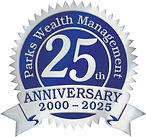What's your parallel parking strategy?
- Jim Parks, CFP, AIF

- Mar 30, 2022
- 2 min read
A new research study, discussed in the Annals of Improbable Research, recommends that drivers reconsider their parallel parking choices in densely populated areas.
Limited street parking creates a variety of challenges for city planners. A dearth of parking may create opposition to bike lanes or new residential developments. In addition, it can produce higher traffic volumes and greater greenhouse gas emissions when driving time is extended by the search for a parking place, reported Dr. Benjy Marks of the University of Sydney and Dr. Emily Moylan of UNSW Sydney who authored Parallel Parking Vehicle Alignment Strategies. They explained:
“The alignment of vehicles within parallel parking spaces influences the efficiency of street parking. We numerically model the effect of vehicle-alignment strategy on the packing density over a range of block lengths. We investigate the effect of four strategies:
a) front of available space
b) either end of available space
c) middle of space
d) randomly within the space
“The findings quantify the advantage of aligning vehicles at the ends of the available space…”
While the researchers’ findings may be valid, drivers who do not excel at parallel parking may find the idea of employing a specific parallel parking strategy to be wildly optimistic.
A recent survey found 49 percent of American drivers have some degree of fear of parallel parking, which is a fairly complex driving maneuver. Taylor Covington of The Zebra reported:
“Parallel parking spots are often located in areas where parking is limited. These areas are usually busy with pedestrians or other cars so, it increases the pressure to find and fit in a spot. That may explain why drivers reported that ‘holding up traffic’ was their biggest fear related to parallel parking. Other common concerns included hitting another car, getting blocked in, bystanders watching, and hitting the curb.”
Perhaps self-parking cars will help.





Comments